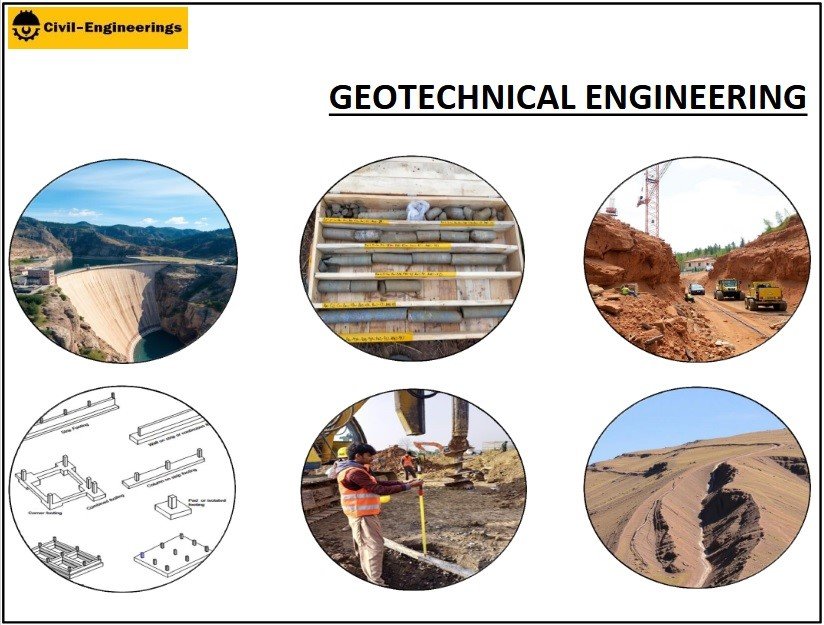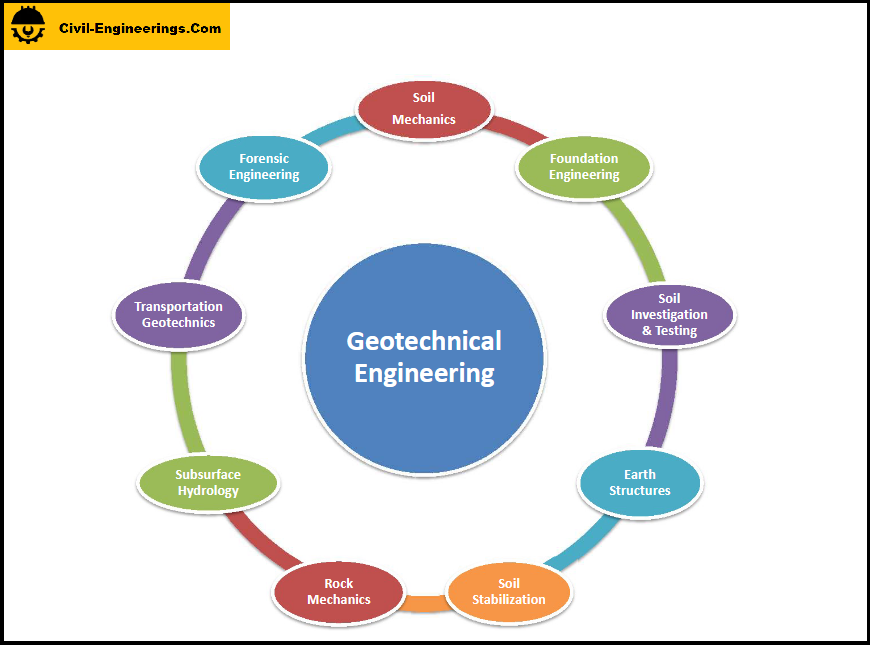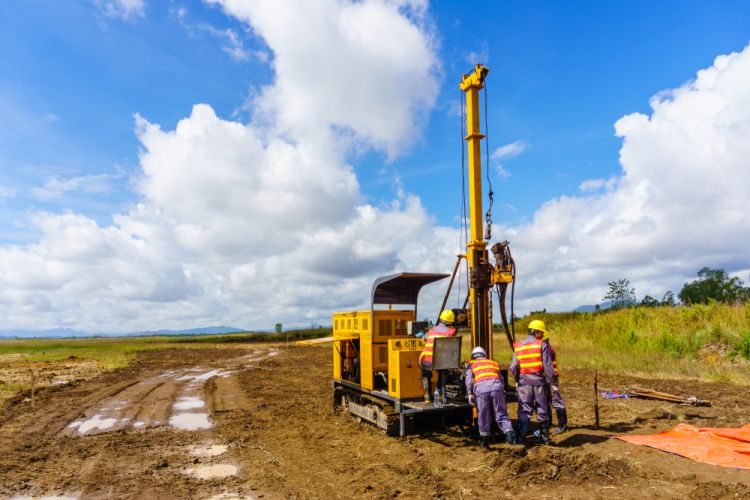The Greatest Guide To Geotechnical Engineering For Construction Projects
The Basic Principles Of Geotechnical Engineering For Construction Projects
Table of ContentsGet This Report on Geotechnical Engineering For Construction ProjectsThe Only Guide for Geotechnical Engineering For Construction ProjectsThe Main Principles Of Geotechnical Engineering For Construction Projects Our Geotechnical Engineering For Construction Projects Diaries5 Simple Techniques For Geotechnical Engineering For Construction ProjectsThe Of Geotechnical Engineering For Construction ProjectsThe Only Guide to Geotechnical Engineering For Construction Projects
Concepts and Technique of Ground Renovation. Ground Improvement Principles And Applications In Asia. Layout evaluation in rock technicians.Cengage Understanding, Stamford, 666 p. Atkinson, J., 2007. The auto mechanics of soils and foundations. The Observational Technique in ground engineering concepts and applications.
Indicators on Geotechnical Engineering For Construction Projects You Should Know
Research laboratory and area testing plays a vital role in this procedure. By drawing out samples from the planet's subsurface and applying a collection of tests, geotechnical designers can predict the behaviour of dirt layers and assess their viability for numerous building efforts. The essence of geotechnical engineering in civil design can not be overstated, attributable to a number of factors: The preliminary step in any geotechnical research entails identifying the soil kind at the construction site.
The structure acts as the bedrock of any kind of construction job. Choosing the proper foundation type is a choice that pivots on the detailed evaluation provided by geotechnical engineering.

Geotechnical website examination is a crucial step in the planning and implementation of any building task. It entails the collection and evaluation of information associated with the physical homes of soil and rock beneath a proposed construction website. This information is important for the layout and building of safe, secure, and lasting structures.
Little Known Facts About Geotechnical Engineering For Construction Projects.
In this blog, we will certainly look into the value of geotechnical site examination, its numerous parts, and just how it profits building and construction jobs. Geotechnical website investigation, likewise known as subsurface exploration, entails a series of tasks intended at determining the dirt, rock, and groundwater problems at a building and construction site. The key goals are to identify possible geotechnical hazards, analyze the engineering homes of subsurface materials, and give suggestions for the design and construction of foundations, retaining wall surfaces, and various other frameworks.
This might consist of geological maps, airborne photos, previous examination records, and historic information. The workdesk research aids in identifying prospective geotechnical problems and preparing the succeeding fieldwork. Adhering to the workdesk research study, a website reconnaissance is conducted to visually examine the website and its environments. This involves observing the topography, water drainage patterns, existing structures, vegetation, and any kind of indicators of instability or erosion.
The Greatest Guide To Geotechnical Engineering For Construction Projects
Shallow examination pits are excavated to straight observe and example the dirt and rock. This method serves for examining the top layers of the subsurface and identifying near-surface risks. Non-invasive geophysical approaches, such as seismic refraction, ground-penetrating radar (GPR), and electrical resistivity tomography (ERT), are used to map subsurface conditions and spot anomalies.
Soil and rock samples accumulated during the area examination undergo research laboratory screening to determine their physical and mechanical properties. Typical lab tests include grain size evaluation, Atterberg limits, compaction examinations, triaxial shear examinations, and debt consolidation tests. These tests give necessary data for geotechnical analysis and layout. The information accumulated from the workdesk study, site reconnaissance, area investigation, and lab testing are evaluated and translated to establish a comprehensive understanding of the subsurface conditions.
The main benefit of geotechnical site investigation is making certain the safety and security and stability of frameworks. By understanding the subsurface conditions, engineers can develop structures and various other structural elements that can withstand the loads and ecological pressures they will certainly be subjected to. This minimizes the risk of negotiation, decrease, and architectural failing.
What Does Geotechnical Engineering For Construction Projects Mean?
This guarantees efficient and secure building techniques. Geotechnical site examinations are frequently called for by developing codes and laws.
This info is indispensable for task supervisors, architects, and contractors in establishing practical schedules, budget plans, and backup plans. Geotechnical Engineering for Construction Projects. High-Rise Structure in a Coastal AreaIn a coastal city, a skyscraper residential building was planned on a website with presumed loosened sand down payments and a high water table. An in-depth geotechnical investigation, consisting of borehole exploration, CPT, and geophysical surveys, was conducted
Geotechnical Engineering For Construction Projects - An Overview
Based on these findings, the foundation design was changed to consist of deep stack foundations extending right into secure strata, and ground improvement techniques, such as vibro-compaction, were applied to alleviate liquefaction dangers. This aggressive strategy ensured the safety and security and stability of the building while preventing pricey post-construction removal. Framework Development on a Sloping TerrainA major framework job, including the building of a highway and bridges, was prepared on a hilly surface with steep slopes.

The Leaning Tower of Pisa (Italy), a renowned architectural wonder, is notorious for its unexpected tilt from substantial geotechnical issues. The tower's foundation was inadequately made to deal with the soft, unsteady dirt below it, bring about unequal negotiation and its unique lean. Our globe is dotted with outstanding infrastructure projectsfrom towering skyscrapers to stretching bridgesall standing testimony to the advancement of the various building equipment and approaches offered.
Geotechnical engineering is a customized field look what i found within civil design that concentrates on examining the behavior of planet materials. This branch dives deep right into the groundinvestigating how the dirt, rock, and groundwater at a building website can influenceand be influenced bythe facilities that we put up on and into them. Prior to a solitary brick is laid or a concrete structure put, geotechnical engineers probe into the earthgathering vital data regarding the website's soil make-up, rock structure, and groundwater degrees.
Getting The Geotechnical Engineering For Construction Projects To Work

is a device made use of to evaluate the honesty and load-bearing capacity of piles during setup, leveraging the principle of wave proliferation. It maximizes building performance by providing real-time analyses, therefore ensuring secure and efficient stack foundations. One of the functional applications of geotechnical design entails choosing and executing the best methods for foundation construction.
Pile driving stands you could try these out for greater than the plain act of putting structural components into the ground. On the contrary, it is a thoroughly coordinated procedure of moving a framework's lots past the much less steady dirt layers more detailed to the surfacedown to the extra considerable strata that exist beneath. In the instance of stack driving, take into consideration just how geotechnical engineers adeptly use this technique to equally disperse the framework's weight.